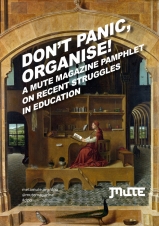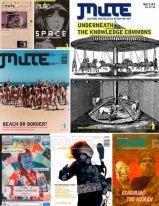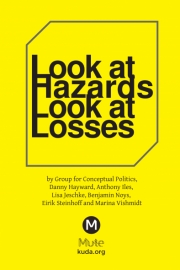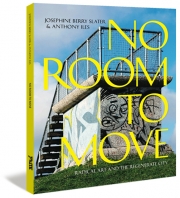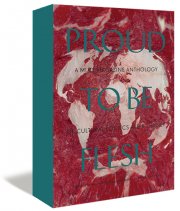Context is the New Pretext
I enjoyed reading this book by treating it as a pleasant compendium of short stories. I’m not keen on the title though: Contemporary Art from Studio to Situation. Making a distinction between studio and situation seems curious. If contemporary artists are attempting a shift from traditional studio based practice because they believe it to be tantamount to confinement in an ivory tower (as suggested by the inclusion/appropriation in this anthology of Daniel Buren’s essay 'The Function of the Studio') then they are assuming that they have considerable power to turn alternative private or public areas into more accessible space. In straying from the traditional studio (whatever that might be) surely itinerant artists appropriate and mutate situations into surrogate studios. Or at least this occurs when residues of work and documentation produced in situation simultaneously (or at a later date) become the dominant point of access to the work. Surely studio is situation, or more accurately situation is studio. In fact, not only studio, because with biennial and institutional backing the sites are transformed into temporary galleries that are safe to visit and if you can’t visit at least you can buy the book or see the DVD.
The publication Contemporary Art from Studio to Situation is derived from transcripts of a lecture series that took place between October 2003 and March 2004. It also includes ‘additional existing and newly commissioned material and an introduction to the field of enquiry’.[1] It is a facet of the Situations project coordinated by the University of West England, in partnership with Arnolfini, which claims:
Situations is a programme of activity devised to investigate the significance of context in the commissioning and production of contemporary art works.[2]The Situations ‘programme’ consists of lectures, print publications, a website, a DVD archive, and commissioned artists’ projects. In ‘investigating’, the book invariably promotes as well. Or more specifically, it promotes a selection of artists and curators. There is no shortage of name-dropping and a substantial biographies section to conclude the text ensures the reader gets a dose of the cult of the individual. To complain about this (however tempting it may be) is to complain about the society in which the practitioners find themselves and would entail forgetting what the book has the capacity to do. This is neither a book about the death of the author, nor a random collage of projects. It is a book well and truly of an art world and the illustration of specific works clearly paves the way for a very active agenda:
Situations seeks to create a distinctive network of debates and projects, radiating from its Bristol base across the south-west region, nationally and internationally, informing the ways in which art is commissioned and made.[3]We are told that ‘what distinguishes situated practices in this publication from the historical premise of site-specificity is the convergence of three key factors’.[4] The first ‘factor’ is the claim that the work demonstrates ‘an emphasis on experience as a state of flux which acknowledges place as a shifting and fragmented entity’.[5] This may be the case with the nomadic works but in being located by texts such as this, (along with a combination of documentation, videos, books, publications and a lecture series), projects and performances are given clear definition.
The second ‘factor’ involves reference to Nicolas Bourriaud’s Relational Aesthetics to explain how ‘a new vocabulary has emerged, “one analagous to Minimal Art and that takes the socius as its base”’.[6] ‘New vocabulary’? Perhaps not, but the artist can now enjoy the role of host/hostess and play the part of a celebrity events coordinator that does much more than tinker behind the scenes. We are also nonchalantly told that such works operate ‘to elude alienation, the division of labour and the commodification of space which characterises our new “network society”.[7] This grand statement could be taken as offensively trivialising. Exactly whose ‘alienation’, ‘labour’ and what ‘space’ is of course not specified. The fact that the availability of ‘context’ as canvas for artists to aestheticise relational experiments is predicated on political and economic stability and others’ exploitation and alienation in a global context is barely mentioned. Discussion of alienation in these genre-promoting terms is inherently alienating, and to claim that products of art industries can function to elude such processes is little more than a marketing ploy. Instigating social interaction by employing the tools of western art systems is alienating to vast populaces (and arguably necessarily so for it to maintain its privileged status as art). It is this possibility and assurance of alienation that allows the book and my essay to exist as commodities within art communities. The artists depicted in this book in all likelihood are not individually claiming to be offering salvation in the face of decaying communities and diminished possibilities for political representation and social interaction, but the book certainly hints at it. In the essay 'Berlin Letter about Relational Aesthetics', Bourriaud states:
…this work implies the constitution of temporary subject groups, or micro-communties, the modelling of alternative modes of sociality and the appropriation of industrial production and economic structures.[8]How fun that must be for the artists, curators, patrons and audience that have the luxury to enjoy the implied ‘alternative modes’. This book is clearly not advocating the hijacking of art to expose the horrors of capitalism. It appears to be promoting the hijacking of tertiary industry to serve art. Many of the sociable performance projects are recorded and turned into video works (or anthologies) and sold to particular groups anyway. What the promotion of ‘factor’ 2’s ‘new vocabulary’ may do is give the artists, curators and audience a roughly hewn purpose and chance to find each other.
Third ‘factor’:
cultural experience has become recognised as a primary component of urban regeneration, so the roles of artists have become redefined as mediators, creative thinkers and agitators, leading to increased opportunities for longer-term engagement between an artist and a given group of people, design process or situation.[9]
This sounds ominously like a housing developer’s handbook. It is a reminder that much of the work depicted in this publication can also be appropriate for the rather sinister task of sweetening the bitter taste of gentrification. Where is the evidence that this leads to increased opportunities for long-term engagement and what is actually meant by ‘engagement’ and ‘long-term’? Why should ‘long-term’ be positive? Isn’t this the same as an invading force consolidating power? The ‘artist’, defined as such, has and always will be a tool to establish and maintain particular power relations. Whether you are happy with this depends on the type of relationships created and your position within them. Is it a good thing for artists to try frantically to leave a legacy to a community they have attempted to infiltrate, create or imagine?
These three key ‘factor’ generalisations are strangely contradicted in an attempt to sidestep debate about how this particular branch of contemporary art practice should be defined, when the statement is made that the book does:
not approach ‘context’ as purely a discreet category of public art discourse, nor is it concerned with ‘contextual practice’ as an artistic genre. Rather it is concerned with ‘context’ as an impetus, hindrance, inspiration and research subject for the process of making art.[10]Despite this disclaimer, the fact remains that this anthology presents a range of individual works, texts and projects within the cosy confines of a single cover, suggesting a catch-all genre and relationships that might otherwise not be observed. The common denominator of the work, as hindered or inspired by ‘context’, is a particularly vague way of dealing with the issues surrounding the creation of art in a non-traditional studio environment. Evidently ‘context’ allows the editors to conveniently collate a range of works including gallery based, nomadic projects and site-specific works that might fascinate their readership. Interestingly the discussion of the context of the internet as inspiration or hindrance to ‘contemporary’ artists working with relational practice is limited in this text. Still, the individual texts and artists’ anecdotes are interesting, entertaining and fun but I can’t help thinking that the possibility of unknowingly stumbling across one of the projects in ‘context’ might prove the most interesting in any case.
‘Relational Aesthetics’, ‘community’, ‘context’, ‘participation’, ‘interactivity’ etc will keep me here grumbling for days. So…rather than add to the name dropping and dissecting the individual artists’ projects and conversations I feel like concentrating on the structure of this book and the position it takes. The anthology is divided into tidy sections: ‘Critical Context’, ‘In Conversation’ and ‘Case Studies’. The ‘Critical Context’ section begins with an introduction from the editor and is sub-divided into the convenient headings: ‘The groundwork’, ‘The engagement process’, and ‘The exhibition and curator’. Despite having claimed to avoid the analysis of a specific genre, the book’s very structure and textbook style segmentation contradicts this, hinting at a preferred typical mode of practice. In the section headed ‘The groundwork’ the editor looks at the research process and the way in which artists pave the way for the realisation of projects:
All artists and collectives here maintain that their status as artists allows them to circumnavigate predictability.[11]But are their efforts at producing spontaneous projects really unhampered by funding, safety regulations, the law etc? For a book discussing context as a hindrance to work there is little mention of the inconveniences to artists set in place by planning regulations, businesses, funders and curators. It is also claimed in the introduction that the artists get round the role of outsider and ‘ethnographer’ by introducing themselves through conversation and researching the overlooked’.[12] I would be interested to know how one can select the ‘overlooked’ and there seems to be a growing tendency to accept that as long as conversation and debate result (as, of course, ‘acts of collaboration’) then at least something has been achieved, irrespective of its nature. ‘Conversations’ however can be dominated by one party and decidedly one sided.
The mention of critical research and the role it plays in working in context seems strangely sparse in the book as a whole. My worry is that it could seem as if merely describing a place, having a chat with the locals and documenting a project afterwards constitutes valuable research. I would like to know why and to whom research is important. Is it really just to placate the locals/gallery goers? The title ‘The groundwork’ almost suggests that artists make sure the site is suitable (safe) for their project by testing the response to their introductions via conversation and if they don’t receive in response a sustained angry attack or get chased off, research can begin.
The book’s accompanying blurb ensures that we know that this ‘anthology provides an overview of this increasingly significant (and contested) field of art practice’.[13] By iterating that this is a contested field, the book can act as a compendium of specific works with a kind of safety net: if the reader were to criticise its short-comings then that’s all part and parcel of the genre because after all there is no definitive genre (and quite rightly so). It’s just that this doesn’t quite fit with a book that presents ‘tendencies’ of situated practices as ‘strategies’.[14]
Methods for producing art world commodities evolve according to economic, political and social circumstances. As this book evinces, artists have in recent times been able to wander around manufacturing (art) communities, instigating discussion and playing about with ‘context’ to suit their desires or allay their concerns. A lot of the characters in this book are sociable artists making sociable works. The desire to do that is understandable. The desire to do that and make a living doing so is even more understandable. If reading about artists and curators engaging in such activities is something you find interesting or entertaining then you might like this book, it might give you something to talk about. Art is here…I’m not too sure I want it…but in writing this I don’t seem to be able to let go.
[1] Contemporary Art from Studio to Situation, London: Black Dog Publishing, (2004) Preface by Caroline Collier Director of Arnolfini and Professor Paul Gough, University of the West of England[2] Ibid, Preface[3] Ibid, Preface[4] Ibid, p.10, Claire Doherty[5] Ibid[6] Claire Doherty, Ibid, and quote from Nicolas Bourriaud 'Berlin Letter about Relational Aesthetics' [7] Ibid[8} Ibid, p. 49 quote from Nicolas Bourriaud, ‘Berlin Letter about Relational Aesthetics’[9] Ibid, p. 10[10] Ibid, p. 7[11] Ibid, p. 11[12] Ibid[13] Ibid, Back Cover [14] Ibid, p 10
Contemporary Art from Studio to Situation, edited by Claire Doherty, Black Dog Publishing, 2004
(Maybe in response we could do with someone writing The Function of the Essay).
Interesting articles that deal with these issues more eloquently than I do:Hal Foster’s article Arty Party, London Review of Books, Volume 25, No.23 4/12/2003 ‘Art is Like Cancer’, Roger Taylor interviewed by Stewart Home, Mute 28 http://www.metamute.org/en/Art-Is-Like-Cancer
Mute Books Orders
For Mute Books distribution contact Anagram Books
contact@anagrambooks.com
For online purchases visit anagrambooks.com


